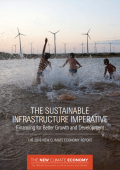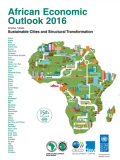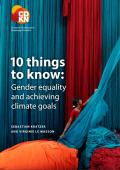
The Low Carbon Society Blueprint for Iskandar Malaysia 2025 presents comprehensive climate change mitigation policies, inlcuding low carbon society actions and sub-actions, and detailed strategies including measures and programs to guide the development of Iskandar Malaysia towards achieving its vision of ‘a strong, sustainable metropolis of international standing’ by 2025.
The Summary for Policymakers offers a concise synopsis of the report, facilitating quick and convenient reference to the Blueprint’s 12 low carbon society actions and the potential carbon emission reductions achievable from the implementation of the actions in Iskandar Malaysia. To provide an effective framework for guiding development in Iskandar Malaysia towards a low carbon society by 2025, the Blueprint adopts the ‘work breakdown structure’ approach that collapses each of the 12 low carbon society actions into sub-actions and, in turn, into measures and detailed programs.
Iskandar Malaysia's Actions for a Low Carbon Future is the first of a series that details 10 of the 281 programmes of the Low Carbon Society Blueprint for Iskandar Malaysia. The report shows how actions supported by science can be used to ensure reduction in carbon emission.
This report describes the 9 programmes being implemented with a special feature on Pasir Guadang, a heavy industry area in the south-eastern region of Iskandar Malysia. Each chapter explains what the programme is all about, its relation to the low carbon society, what the intended outcomes are and the stakeholders that are involved. The book is aims to reach out to a wider audience, sharing what Iskandar Regional Development Authority is working towards in collaboration with other agencies.

The African Economic Outlook (AEO) 2016 presents the current state of economic and social development in Africa and projects the outlook for the coming two years. The AEO is a product of collaborative work by three international partners: the African Development Bank, the OECD Development Centre and the United Nations Development Programme.
The AEO 2016 shows that the continent is performing well in regard to economic, social and governance issues and has encouraging prospects for the near future. With its special theme on sustainable cities and structural transformation, this edition looks closely at Africa’s distinctive pathways towards urbanisation and at how this is increasingly shifting economic resources towards more productive activities.

Although climate change and poverty are increasingly recognised as interlinked global problems, responses often focus on their scientific and economic dimensions only. This research study highlights the advantages and challenges of pursuing climate compatible development, i.e. inclusive green growth, from a gender perspective, pulling in evidence from projects in Asia, Africa and Latin America. The field work focused particularly on urban environments, as there is a relative paucity of data from cities, compared to rural areas.
While international frameworks are gradually becoming more aware of gender issues, all too often gender is simply “added” to existing policies. Women’s views, needs and participation are frequently excluded from climate change responses and development initiatives. Moreover women are often perceived as victims with little consideration for the contribution and leadership they could provide in adaptation and mitigation efforts.
A comparative study of gender approaches in climate compatible development initiatives in Peru, Kenya and India asked:
